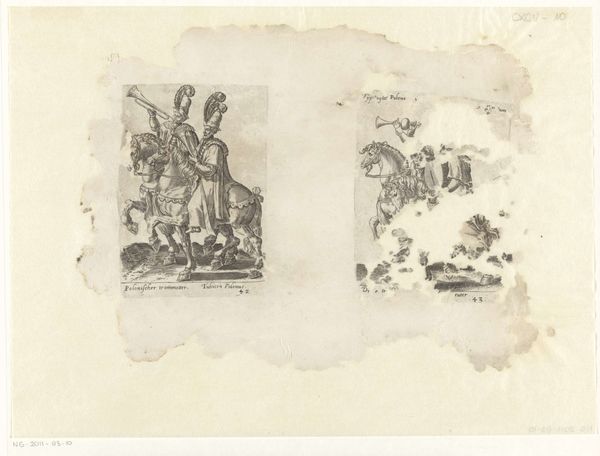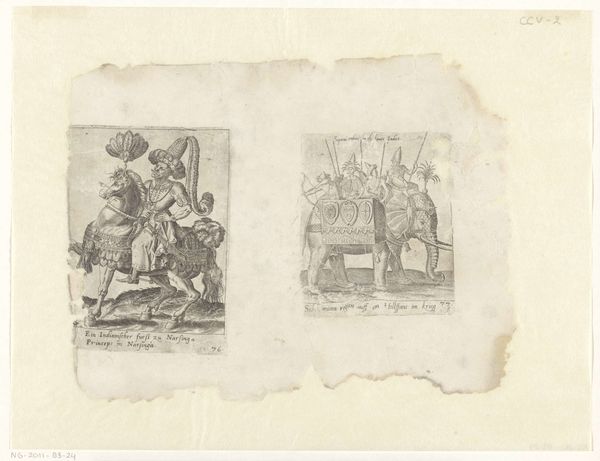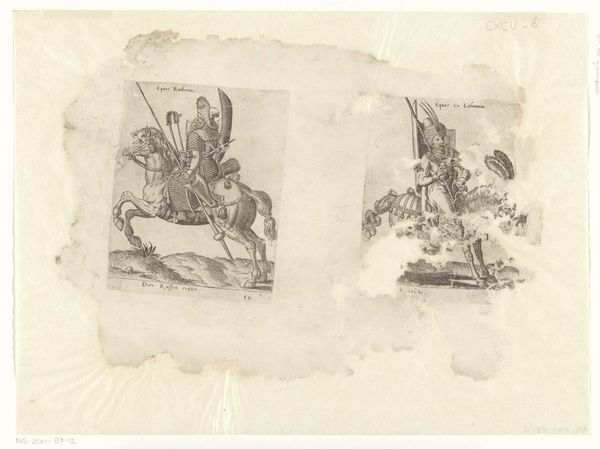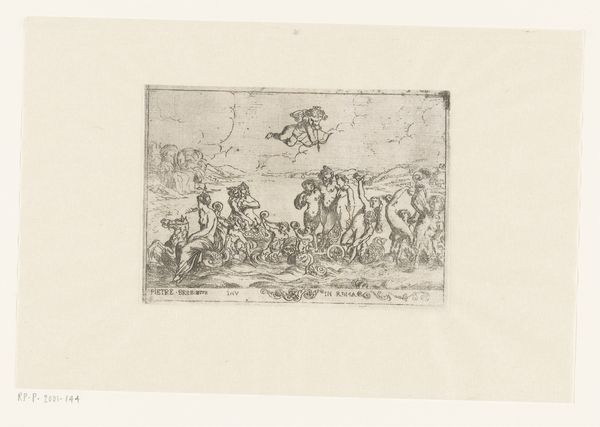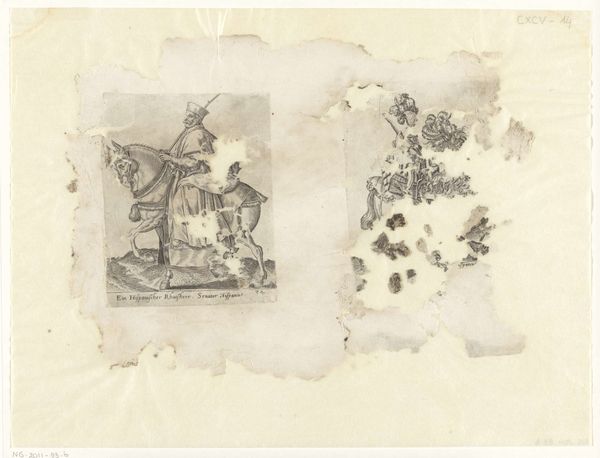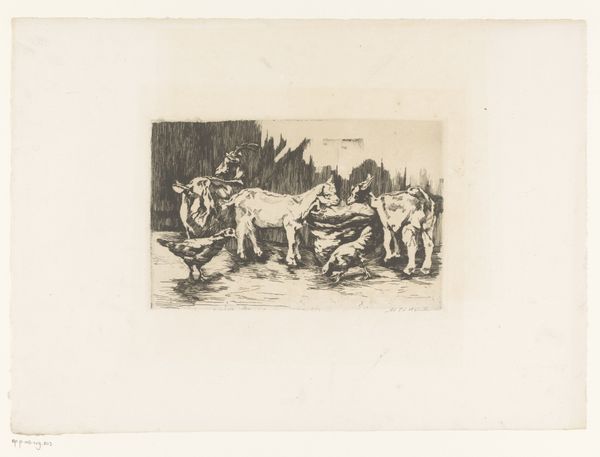
drawing, print, ink, engraving
#
drawing
# print
#
landscape
#
figuration
#
11_renaissance
#
ink
#
history-painting
#
engraving
Dimensions: height 244 mm, width 343 mm
Copyright: Rijks Museum: Open Domain
These images of ‘Poolse vaandeldragers en Poolse ruiters’, or Polish standard-bearers and Polish riders, were made by Abraham de Bruyn in the late 16th century using engraving. This printmaking method involves cutting lines into a metal plate, applying ink, and pressing it onto paper. Here, the crisp lines create intricate details that bring these equestrian figures to life. Look closely, and you’ll see the texture of their clothing and the fine details of their horses' trappings. The process itself, engraving, was laborious and time-consuming, reflecting the importance of skilled craftsmanship in the 16th century. Prints like these were often made for reproduction and distribution. They served not only as art objects, but also as a means of conveying information about different cultures and peoples. De Bruyn’s decision to depict Polish riders, combined with the printmaking technique itself, highlights the intersection of artistry, commerce, and cultural exchange in early modern Europe. It reminds us that even seemingly simple materials like metal, ink, and paper can carry profound historical and social significance.
Comments
No comments
Be the first to comment and join the conversation on the ultimate creative platform.



